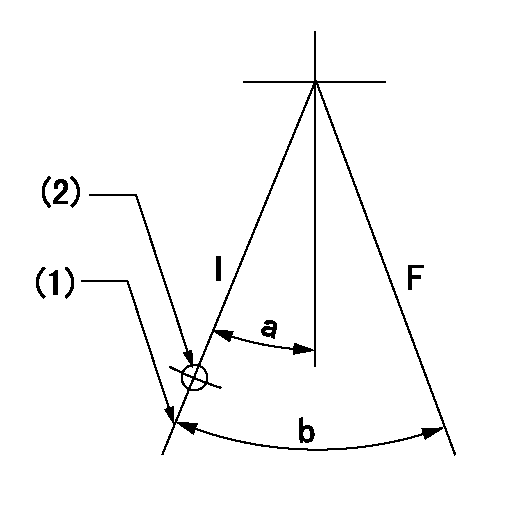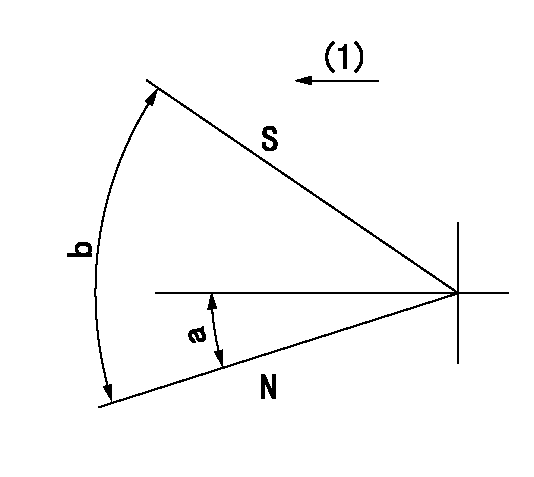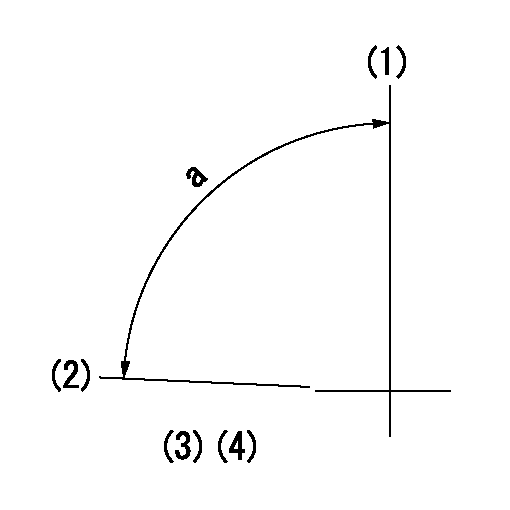Information injection-pump assembly
BOSCH
F 019 Z10 437
f019z10437
ZEXEL
106871-5150
1068715150

Rating:
Service parts 106871-5150 INJECTION-PUMP ASSEMBLY:
1.
_
7.
COUPLING PLATE
8.
_
9.
_
11.
Nozzle and Holder
1660097071
12.
Open Pre:MPa(Kqf/cm2)
17.7(180)/21.6(220)
15.
NOZZLE SET
Include in #1:
106871-5150
as INJECTION-PUMP ASSEMBLY
Cross reference number
BOSCH
F 019 Z10 437
f019z10437
ZEXEL
106871-5150
1068715150
Zexel num
Bosch num
Firm num
Name
Calibration Data:
Adjustment conditions
Test oil
1404 Test oil ISO4113 or {SAEJ967d}
1404 Test oil ISO4113 or {SAEJ967d}
Test oil temperature
degC
40
40
45
Nozzle and nozzle holder
105780-8140
Bosch type code
EF8511/9A
Nozzle
105780-0000
Bosch type code
DN12SD12T
Nozzle holder
105780-2080
Bosch type code
EF8511/9
Opening pressure
MPa
17.2
Opening pressure
kgf/cm2
175
Injection pipe
Outer diameter - inner diameter - length (mm) mm 8-3-600
Outer diameter - inner diameter - length (mm) mm 8-3-600
Overflow valve
132424-0620
Overflow valve opening pressure
kPa
157
123
191
Overflow valve opening pressure
kgf/cm2
1.6
1.25
1.95
Tester oil delivery pressure
kPa
157
157
157
Tester oil delivery pressure
kgf/cm2
1.6
1.6
1.6
Direction of rotation (viewed from drive side)
Right R
Right R
Injection timing adjustment
Direction of rotation (viewed from drive side)
Right R
Right R
Injection order
1-8-7-5-
4-3-6-2
Pre-stroke
mm
3.65
3.6
3.7
Beginning of injection position
Governor side NO.1
Governor side NO.1
Difference between angles 1
Cal 1-8 deg. 45 44.5 45.5
Cal 1-8 deg. 45 44.5 45.5
Difference between angles 2
Cal 1-7 deg. 90 89.5 90.5
Cal 1-7 deg. 90 89.5 90.5
Difference between angles 3
Cal 1-5 deg. 135 134.5 135.5
Cal 1-5 deg. 135 134.5 135.5
Difference between angles 4
Cal 1-4 deg. 180 179.5 180.5
Cal 1-4 deg. 180 179.5 180.5
Difference between angles 5
Cal 1-3 deg. 225 224.5 225.5
Cal 1-3 deg. 225 224.5 225.5
Difference between angles 6
Cal 1-6 deg. 270 269.5 270.5
Cal 1-6 deg. 270 269.5 270.5
Difference between angles 7
Cyl.1-2 deg. 315 314.5 315.5
Cyl.1-2 deg. 315 314.5 315.5
Injection quantity adjustment
Adjusting point
A
Rack position
10
Pump speed
r/min
700
700
700
Average injection quantity
mm3/st.
129.3
128.3
130.3
Max. variation between cylinders
%
0
-4
4
Basic
*
Fixing the lever
*
Injection quantity adjustment_02
Adjusting point
C
Rack position
6.4+-0.5
Pump speed
r/min
235
235
235
Average injection quantity
mm3/st.
10.4
8.4
12.4
Max. variation between cylinders
%
0
-10
10
Fixing the rack
*
Injection quantity adjustment_03
Adjusting point
D
Rack position
-
Pump speed
r/min
100
100
100
Average injection quantity
mm3/st.
140
120
160
Fixing the lever
*
Remarks
After startup boost setting
After startup boost setting
Timer adjustment
Pump speed
r/min
1000
Advance angle
deg.
1.9
1.4
2.4
Timer adjustment_02
Pump speed
r/min
1100
Advance angle
deg.
5
4.5
5.5
Remarks
Finish
Finish
Test data Ex:
Governor adjustment

N:Pump speed
R:Rack position (mm)
(1)Tolerance for racks not indicated: +-0.05mm.
(2)Torque control spring setting
(3)Excess fuel setting for starting: SXL (N = N1)
(4)Damper spring setting
(5)Variable speed specification: idling adjustment
(6)Fix the lever at the full-load position at delivery.
(7)Main spring setting
----------
SXL=10.1+-0.1mm N1=450r/min
----------
----------
SXL=10.1+-0.1mm N1=450r/min
----------
Speed control lever angle

F:Full speed
I:Idle
(1)Pump speed = aa
(2)Set the stopper bolt (fixed at full-load position at delivery.)
----------
aa=290r/min
----------
a=13.5deg+-5deg b=5deg+-5deg
----------
aa=290r/min
----------
a=13.5deg+-5deg b=5deg+-5deg
0000000901

F:Full load
I:Idle
(1)Stopper bolt setting
(2)Use the hole at R = aa
----------
aa=64.3mm
----------
a=18.5deg+-5deg b=24.5deg+-3deg
----------
aa=64.3mm
----------
a=18.5deg+-5deg b=24.5deg+-3deg
Stop lever angle

N:Pump normal
S:Stop the pump.
(1)Drive side
----------
----------
a=12deg+-5deg b=64deg+-5deg
----------
----------
a=12deg+-5deg b=64deg+-5deg
Timing setting

(1)Pump vertical direction
(2)Position of the coupling's key groove at the beginning of injection of the No. 8 cylinder.
(3)-
(4)-
----------
----------
a=(90deg)
----------
----------
a=(90deg)
Information:
Use Again - if wear on contact surfaces cannot be felt with a seal pick.
Illustration 46 g06346577
Rack control and limiting sleeve.
Use Again - if wear on contact surfaces cannot be felt with a seal pick.Riser Shaft and Pin
Illustration 47 g06346580
Riser shaft.
Use Again - if there is no wear step on the shaft, which can be felt with a seal pick. If a step is present, it will generally occur near the center of the shaft.
Illustration 48 g06346583
Normal wear on pin at end of riser shaft.
Use Again
Illustration 49 g06346588
Pin with material eroded away near the center relief.
Do Not Use AgainFlyweight and Dowel
Illustration 50 g06346593
Flyweight toe with gouges near dowel hole.
Do Not Use Again - if wear marks can be felt with a seal pick.
Illustration 51 g06346599
Flyweight toe wear.
Do Not Use Again
Illustration 52 g06346602
Flyweight toe wear.
Do Not Use Again - if there are any signs of "flat spots". Worn flyweight toes may be highly polished so that flat spots are difficult to feel. Hold the flyweight toe surface in bright light and watch for changes in reflection in worn areas. Use a new flyweight toe for comparison.
Illustration 53 g06346609
Acceptable wear on flyweight dowel.
Use Again - if wear cannot be felt with a seal pick.
Illustration 54 g06346611
Heavy wear on flyweight dowel.
Do Not Use AgainNote: Examine the dowel seating area on the flyweight carrier. If there is any apparent wear, reinstall dowels in the unused positions, 90 degrees from original position.Bearing Assembly
Illustration 55 g06346614
The bearing (white collar) shown in position on the FARC diaphragm retainer (Type V, VI, and VII Governors) shows wear.
Do Not Use AgainGovernor Spring Seat
Illustration 56 g06346615
Governor spring seat with typical wear.
Use Again - if there are no gouges to surfaces (1) on the spring seating area.Spring Pack
Illustration 57 g06346618
End view of governor spring pack.
Use Again - after realignment.Note the off-center position of the internal springs with respect to the outside spring. This can cause governor instability, which results in surging. Rotate the springs on their seat so that the inner springs are aligned (centered) with respect to the outer spring. Remove sharp edges (A) from the inside diameter of the flat surface on the springs to ensure springs seat properly.
Illustration 46 g06346577
Rack control and limiting sleeve.
Use Again - if wear on contact surfaces cannot be felt with a seal pick.Riser Shaft and Pin
Illustration 47 g06346580
Riser shaft.
Use Again - if there is no wear step on the shaft, which can be felt with a seal pick. If a step is present, it will generally occur near the center of the shaft.
Illustration 48 g06346583
Normal wear on pin at end of riser shaft.
Use Again
Illustration 49 g06346588
Pin with material eroded away near the center relief.
Do Not Use AgainFlyweight and Dowel
Illustration 50 g06346593
Flyweight toe with gouges near dowel hole.
Do Not Use Again - if wear marks can be felt with a seal pick.
Illustration 51 g06346599
Flyweight toe wear.
Do Not Use Again
Illustration 52 g06346602
Flyweight toe wear.
Do Not Use Again - if there are any signs of "flat spots". Worn flyweight toes may be highly polished so that flat spots are difficult to feel. Hold the flyweight toe surface in bright light and watch for changes in reflection in worn areas. Use a new flyweight toe for comparison.
Illustration 53 g06346609
Acceptable wear on flyweight dowel.
Use Again - if wear cannot be felt with a seal pick.
Illustration 54 g06346611
Heavy wear on flyweight dowel.
Do Not Use AgainNote: Examine the dowel seating area on the flyweight carrier. If there is any apparent wear, reinstall dowels in the unused positions, 90 degrees from original position.Bearing Assembly
Illustration 55 g06346614
The bearing (white collar) shown in position on the FARC diaphragm retainer (Type V, VI, and VII Governors) shows wear.
Do Not Use AgainGovernor Spring Seat
Illustration 56 g06346615
Governor spring seat with typical wear.
Use Again - if there are no gouges to surfaces (1) on the spring seating area.Spring Pack
Illustration 57 g06346618
End view of governor spring pack.
Use Again - after realignment.Note the off-center position of the internal springs with respect to the outside spring. This can cause governor instability, which results in surging. Rotate the springs on their seat so that the inner springs are aligned (centered) with respect to the outer spring. Remove sharp edges (A) from the inside diameter of the flat surface on the springs to ensure springs seat properly.

